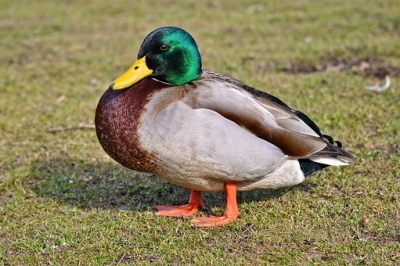
The webbed foot is a specialized limb present in a variety of vertebrates that aids in locomotion. This adaptation is primarily found in semiaquatic species, and has convergently evolved many times across vertebrate taxa. The webbed foot also has enabled other novel behaviors like escape responses and mating behaviors. A webbed foot may also be called a paddle to contrast it from a more hydrofoil-like flipper.
Ducks, geese, and swans all have webbed feet. They utilize different foraging behaviors in water, but use similar modes of locomotion. There is a wide variety of webbing and lobation styles in bird feet, including birds with all digits joined in webbing, like the Brandt’s cormorant and birds with lobed digits, like grebes.
Webbed feet are a compromise between aquatic and terrestrial locomotion. Aquatic control surfaces of non-piscine vertebrates may be paddles or hydrofoils. Paddles generate less lift than hydrofoils, and paddling is associated with drag-based control surfaces. The roughly triangular design of webbed feet, with a broad distal end, is specialized to increase propulsive efficiency by affecting a larger mass of water over generating increased lift. This is in contrast to a more hydrofoil-like flipper of many permanently aquatic animals.
Picture Credit : Google




